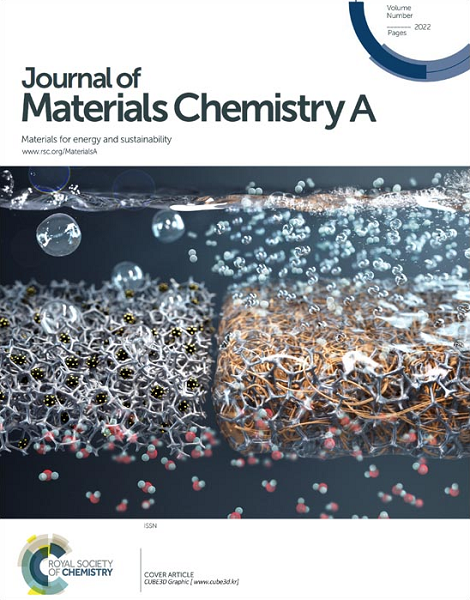High-entropy structure design of transition metal dichalcogenides for improved electromagnetic wave absorption performance
IF 10.7
2区 材料科学
Q1 CHEMISTRY, PHYSICAL
引用次数: 0
Abstract
Transition metal dichalcogenides (TMDs) have attracted great interests due to their unique properties and wide range of applications. The versatile composition and tunable phase structure provide larger potential to explore TMDs with unprecedented properties. In the present work, a simple model based on the Hume-Rothery rules is proposed to predict the formation possibility of TMDs containing multiple transition metal elements. Several predicted high-entropy TMDs, e.g. (Ti0.25V0.25Cr0.25Nb0.25)S2 and (Ti0.2V0.2Cr0.2Nb0.2Ta0.2)S2 are synthesized through a solid-phase reaction route. The high-entropy solid solution of the M-site element results in an atomic-scale ordered/disordered stacking structure of the TMDs crystal, which enhances the dipole polarization. The multiple M-site elements induce 1T/2H phase transition within the TMDs sheets, which enhances the interfacial polarization. These two factors significantly enhance the dielectric loss of high-entropy TMDs, particularly endowing (Ti0.25V0.25Cr0.25Nb0.25)S2 with exceptional electromagnetic wave absorption capabilities. The maximum reflection loss of (Ti0.25V0.25Cr0.25Nb0.25)S2 reaches -60.31 dB and the effective absorption bandwidth is 2.31 GHz at 8.2-12.4 GHz band. This study demonstrates the great potential for tuning the properties and broaden the applications of TMDs through high-entropy structure design.求助全文
约1分钟内获得全文
求助全文
来源期刊

Journal of Materials Chemistry A
CHEMISTRY, PHYSICAL-ENERGY & FUELS
CiteScore
19.50
自引率
5.00%
发文量
1892
审稿时长
1.5 months
期刊介绍:
The Journal of Materials Chemistry A, B & C covers a wide range of high-quality studies in the field of materials chemistry, with each section focusing on specific applications of the materials studied. Journal of Materials Chemistry A emphasizes applications in energy and sustainability, including topics such as artificial photosynthesis, batteries, and fuel cells. Journal of Materials Chemistry B focuses on applications in biology and medicine, while Journal of Materials Chemistry C covers applications in optical, magnetic, and electronic devices. Example topic areas within the scope of Journal of Materials Chemistry A include catalysis, green/sustainable materials, sensors, and water treatment, among others.
 求助内容:
求助内容: 应助结果提醒方式:
应助结果提醒方式:


